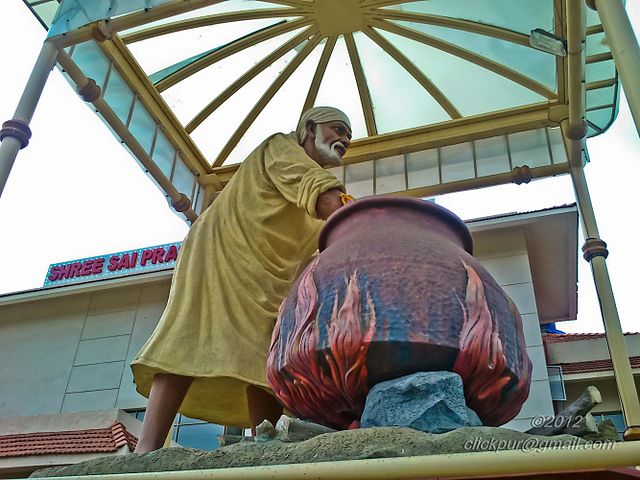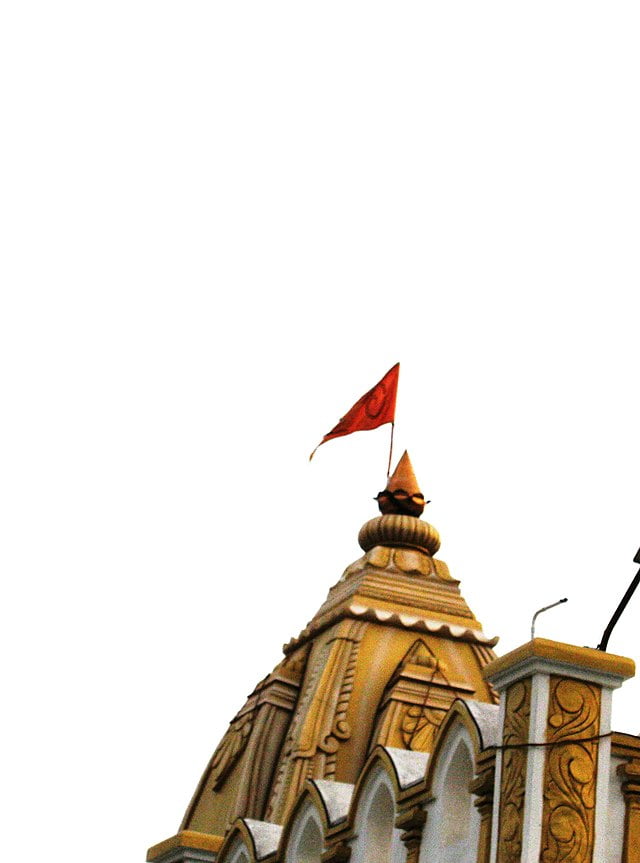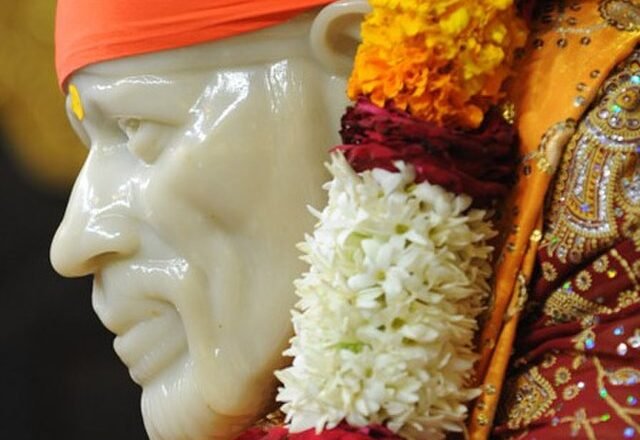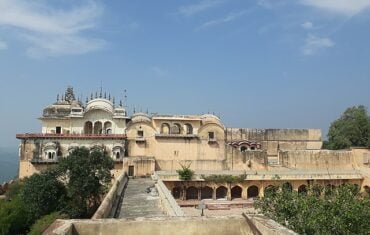Shirdi is a small town in the Ahmednagar district of Maharashtra, which has become one of the most popular spiritual destinations in India. It is the abode of Sai Baba, a saint and fakir who lived and preached here in the late 19th and early 20th century. Sai Baba’s teachings of love, compassion, and universal brotherhood have inspired millions of people from all walks of life and faiths. His samadhi (tomb) and shrine are the main attractions in Shirdi, where devotees can witness the daily rituals and ceremonies, participate in the prayers and bhajans (devotional songs), and seek his guidance and miracles.
Shirdi has a rich and intriguing history that dates back to several centuries. It was once a part of the Nizam’s territory, and was ruled by various dynasties, such as the Yadavas, the Bahamanis, the Mughals, the Marathas, and the British. The town was also a witness to many wars and conflicts, such as the Battle of Koregaon in 1818, which marked the end of the Peshwa rule. However, it was Sai Baba who put Shirdi on the map of India and the world, by transforming it into a spiritual hub.
This blog aims to provide comprehensive information about Shirdi and its spiritual significance. Whether you are a devout follower of Sai Baba or a curious traveler looking for a unique experience, this blog will help you plan your trip and make the most of your visit.
Table of Contents
The Life and Teachings of Sai Baba

Sai Baba’s early life and mysterious origins
One of the most intriguing aspects of Sai Baba’s life is his mysterious origins. No one knows for sure where he was born, when he was born, or what his real name was. He never revealed these details to anyone, and often gave vague or contradictory answers when asked about his past. Some sources claim that he was born in a small village called Pathri in Maharashtra, to a boatman called Ganga Bhavadia and his wife Devagiriamma . Others claim that he was born in Tamil Nadu, to a Muslim father named Abdul Sattar and a Hindu mother named Vaishnavdevi. Some even believe that he was not born at all, but descended from heaven as an avatar (incarnation) of God.
What is known for certain is that Sai Baba arrived in Shirdi as a young boy around 1858, and was first spotted by a local villager named Mahalsapati under a neem tree. Mahalsapati addressed him as “Sai”, which means “saint” in Marathi. The name stuck with him ever since. Sai Baba lived an ascetic life, wandering around the town and its outskirts, begging for alms and sleeping under trees or in temples. He wore a simple white robe, tied his hair in a knot, and carried a satka (stick), a chillum (smoking pipe), and a begging bowl.
Exploration of Sai Baba’s teachings and philosophy
Sai Baba’s teachings and philosophy were based on the principles of love, compassion, service, charity, forgiveness, inner peace, and devotion to God and Guru. He did not adhere to any specific religion or sect, but respected all faiths and traditions. He often quoted from various scriptures, such as the Vedas , the Upanishads , the Bhagavad Gita , the Quran , and the Bible . He also used parables , stories , analogies , and symbols to convey his message.
Sai Baba taught that there is only one God , who is omnipresent , omniscient , omnipotent , and omnibenevolent . He said that God can be worshipped in any form or name , as long as one has faith and sincerity . He also said that God can be experienced within oneself , by realizing one’s true nature , which is pure , blissful , and eternal . He urged his devotees to follow the path of self-inquiry , self-surrender , selfless service , meditation , and chanting . He said that these practices would help them attain self-realization , which is the ultimate goal of life .
Sai Baba also emphasised on the importance of moral conduct , social responsibility , human values , and universal brotherhood . He said that one should always speak the
Pilgrimage Itineraries and Travel Tips

Recommended duration of stay in Shirdi for a fulfilling experience
Shirdi is a place that can be visited at any time of the year, and for any duration of time. However, to have a fulfilling and satisfying experience, it is advisable to stay for at least two to three days in Shirdi. This will allow you to visit all the major attractions in Shirdi, as well as some of the nearby places of interest. It will also give you enough time to participate in the various rituals and ceremonies at the temple, and to soak in the spiritual atmosphere of the town.
Suggested pilgrimage itineraries for devotees seeking a holistic journey
There are many ways to plan your pilgrimage itinerary to Shirdi, depending on your preferences and schedule. Here are some suggested itineraries for devotees seeking a holistic journey:
- Day 1: Arrive in Shirdi by cab from Mumbai or Pune. Check into your hotel and freshen up. Visit the Shri Sai Baba Sansthan Temple and have darshan (viewing) of Sai Baba’s samadhi (tomb) and shrine. Participate in the mid-day aarti (prayer) and receive prasad (offering). Visit the museum, library, and canteen within the temple complex. Spend some time in meditation and contemplation at the temple premises. In the evening, attend the dhoop aarti (evening prayer) and join the bhajan (devotional song) session. Have dinner at your hotel or at a local restaurant.
- Day 2: Wake up early and attend the kakad aarti (morning prayer) at the temple. Have breakfast at your hotel or at a local eatery. Visit the Dwarkamai Mosque, where Sai Baba lived for most of his life. See the dhuni (sacred fire), the stone, and other objects used by Sai Baba. Visit the Gurusthan, where Sai Baba was first seen as a child under a neem tree. Visit the Chavadi, where Sai Baba used to sleep every alternate night. Visit the Lendi Baug, where Sai Baba used to water the plants, feed the animals, and meditate under a neem tree. Have lunch at your hotel or at a local restaurant. In the afternoon, visit some of the nearby attractions, such as Shani Shingnapur, a village famous for its temple dedicated to Lord Shani (Saturn), where people do not lock their doors; Trimbakeshwar, a town known for its Jyotirlinga shrine dedicated to Lord Shiva; or Nashik, a city of spiritual importance and the venue of the Kumbh Mela festival. Return to Shirdi by evening and attend the shej aarti (night prayer) at the temple. Have dinner at your hotel or at a local restaurant.
- Day 3: Wake up early and attend the kakad aarti (morning prayer) at the temple. Have breakfast at your hotel or at a local eatery. Visit some of the other places of interest in Shirdi, such as Upasani Maharaj Ashram, where Sai Baba’s disciple Upasani Maharaj lived and taught; Sakori Ashram, where another disciple of Sai Baba, Meher Baba, established his spiritual center; or Khandoba Temple, where Sai Baba was first greeted as “Sai” by Mahalsapati. Have lunch at your hotel or at a local restaurant. Check out from your hotel and depart from Shirdi by cab to Mumbai or Pune.
Practical travel tips, including transportation options, accommodations, and local cuisine

Here are some practical travel tips to make your trip to Shirdi smooth and hassle-free:
- Transportation options: The best way to travel to Shirdi from Mumbai or Pune is by cab , which will take you around 5 hours to reach. You can book a Mumbai to Shirdi tour package by cab , which will provide you with a comfortable and convenient transportation option. You can choose from a variety of cabs , ranging from hatchbacks to sedans to SUVs , depending on your budget and preference . You can also customize your itinerary according to your interests and time availability . Alternatively , you can also travel by bus , train , or flight to Shirdi , but these options may not be as flexible or comfortable as cab .
- Accommodations: There are many hotels , guest houses , lodges ,
Festivals and Celebrations in Shirdi

Overview of major festivals celebrated in Shirdi, such as Ram Navami and Guru Purnima
Shirdi is a place of joy and festivity, where various festivals are celebrated throughout the year with great enthusiasm and devotion. The festivals in Shirdi are not only occasions of religious significance, but also of cultural and social integration. The festivals bring together people of different faiths and backgrounds, who share a common bond of love and reverence for Sai Baba. Some of the major festivals celebrated in Shirdi are:
- Ram Navami: This is the festival that commemorates the birth anniversary of Lord Rama, the seventh incarnation of Lord Vishnu. It is celebrated in the month of March or April, according to the Hindu lunar calendar. In Shirdi, Ram Navami has a special significance, as it was the day when Sai Baba allowed his devotees to celebrate his urs (death anniversary) for the first time in 1897. Sai Baba wanted to show that he was beyond any religious distinction, and that he respected both Hinduism and Islam. Thus, Ram Navami became a symbol of communal harmony and unity in Shirdi. The festival is celebrated with great fervor and zeal, with a program of puja (worship), music (bhajan), public parayana (reading of scriptures and devotional texts), and exuberant processions with the palanquin and the rath (cart). The Samadhi Mandir remains open all night during one of these days, with Dwarkamai being open the previous night. There are also all night bhajan and qawali sessions at various locations in Shirdi.
- Guru Purnima: This is the festival that honors the Guru (spiritual teacher) and seeks his special blessing. It is celebrated on the full moon day of the month of Ashadha (July or August), according to the Hindu lunar calendar. In Shirdi, Guru Purnima was the only festival that Sai Baba asked his devotees to celebrate. It was the day when he declared himself as a Guru to his disciples, and gave them his famous advice: “Look to me, and I shall look to you”. Guru Purnima is a day of gratitude and devotion, when devotees express their love and respect for Sai Baba by offering him flowers, fruits, sweets, clothes, and money. They also participate in the abhishek (bathing) of Sai Baba’s idol, the darshan (viewing) of Sai Baba’s relics, and the prasad (offering) distribution. There is also Vyasa Puja that is held during Guru Purnima, in honor of Ved Vyasa, who wrote the epic Mahabharata.
Description of the grand celebrations and their significance in Shirdi
The celebrations in Shirdi during these festivals are grand and spectacular, reflecting the spirit and faith of the devotees. The celebrations have a deep significance for the devotees, as they provide them with an opportunity to experience Sai Baba’s presence and grace. Some of the features of the celebrations are:
- The palanquin procession: This is a procession that carries Sai Baba’s portrait or idol on a decorated palanquin around the town. The procession is accompanied by devotees who sing and dance along the way. The palanquin procession symbolizes Sai Baba’s visit to his devotees’ homes, blessing them with his love and protection.
- The rath procession: This is a procession that carries Sai Baba’s portrait or idol on a wooden cart pulled by bullocks or devotees. The cart is adorned with flowers, flags, and lights. The rath procession symbolizes Sai Baba’s journey to various places of pilgrimage, spreading his message and miracles.
- The bhajan and qawali sessions: These are sessions where devotees sing devotional songs in praise of Sai Baba. The bhajans are usually in Hindi or Marathi languages, while the qawalis are in Urdu or Persian languages. The bhajan and qawali sessions symbolize Sai Baba’s musical talent and his appreciation for both Hindu and Muslim traditions.
- The prasad distribution: This is a practice where devotees distribute food or sweets to other devotees or visitors as a mark of hospitality and generosity. The prasad distribution symbolizes Sai Baba’s compassion and charity for all beings.
Beyond Shirdi: Exploring Nearby Attractions
Shirdi is not only a spiritual destination, but also a gateway to explore some of the nearby attractions that offer a variety of experiences. Whether you are interested in history, culture, nature, or adventure, you will find something to suit your taste and mood. Here are some of the places that you can visit near Shirdi:
- Nashik: This is a city of spiritual importance and the venue of the Kumbh Mela festival, which is held once every 12 years. Nashik is also known for its ancient temples, such as the Trimbakeshwar Temple, the Kalaram Temple, and the Sita Gufa. Nashik is also famous for its vineyards and wineries, where you can taste some of the finest wines in India. Nashik is about 90 km away from Shirdi, and can be reached by cab or bus.
- Trimbakeshwar: This is a town known for its Jyotirlinga shrine dedicated to Lord Shiva. The shrine is one of the 12 Jyotirlingas in India, and is considered to be very sacred and powerful. The shrine is also the source of the Godavari river, which is one of the holy rivers in Hinduism. Trimbakeshwar is about 100 km away from Shirdi, and can be reached by cab or bus.
- Ellora and Ajanta Caves: These are ancient rock-cut caves that showcase India’s rich cultural heritage and artistic excellence. The caves date back to between the 2nd century BC and the 6th century AD, and contain Buddhist, Hindu, and Jain sculptures and paintings. The caves are UNESCO World Heritage Sites, and are among the finest examples of Indian art and architecture. Ellora Caves are about 110 km away from Shirdi, while Ajanta Caves are about 200 km away. They can be reached by cab or bus.
Sai Baba’s Global Impact
Spread of Sai Baba’s teachings worldwide and his devotees across nations
Sai Baba’s teachings have spread worldwide and have attracted devotees from various nations, cultures, religions, and backgrounds. Sai Baba’s message of love, service, harmony, and peace has transcended all boundaries and barriers, and has inspired millions of people to follow his path and example. Sai Baba’s devotees can be found in every continent and in more than 100 countries. They have formed various organizations, centers, groups, and trusts to propagate Sai Baba’s teachings and to carry out humanitarian activities in his name.
Some of the prominent organizations are the Shri Sai Baba Sansthan Trust, which manages the affairs of the Shirdi temple and its various branches; the Sathya Sai Organization, which was founded by Sathya Sai Baba, who claimed to be the reincarnation of Sai Baba; and the Shirdi Sai Global Foundation, which was established by Dr. Chandra Bhanu Satpathy, a spiritual leader and a devotee of Sai Baba.
Sai Baba’s influence on various aspects, including art, literature, and social initiatives
Sai Baba’s influence can be seen on various aspects of human life and society, including art, literature, and social initiatives. Sai Baba’s life and teachings have inspired many artists, writers, musicians, filmmakers, and poets to create works of art that reflect his spirit and vision. Some of the examples are the paintings of Indra Sharma, the books of Rangaswami Parthasarathy and V.B. Kher, the songs of Lata Mangeshkar and Jagjit Singh, the films of Manoj Kumar and Ashok Kumar, and the poems of Narasimha Swami and Das Ganu.
Sai Baba’s teachings have also motivated many devotees to undertake social initiatives that aim to serve the needy and the suffering. Some of the examples are the free medical camps, hospitals, schools, colleges, orphanages, old age homes, water projects, disaster relief operations, environmental protection programs, and interfaith dialogues that are conducted by various Sai Baba organizations and individuals.
Sai Baba’s message of universal love and unity in today’s world
Sai Baba’s message of universal love and unity is more relevant than ever in today’s world, which is plagued by violence, hatred, intolerance, injustice, and ignorance. Sai Baba taught that there is only one God , who is present in all beings , and that all religions are different paths to reach the same goal . He urged his devotees to respect all faiths , to serve all beings , to love all creatures , to help ever , to hurt never , and to be happy always .
He also said that the best way to love God is to love his creation , and that the best way to serve God is to serve his children . He said that by doing so , one can realize one’s true self , which is divine , blissful , and eternal . He said that this is the essence of all scriptures , the goal of all spiritual practices , and the secret of all happiness . He said that this is his message , his mission , and his legacy .
Conclusion
Shirdi is a spiritual destination that offers a unique and enriching experience to all who visit it. It is the place where Sai Baba lived, taught, and performed miracles, and where his presence and grace can still be felt. Shirdi is also a place of joy and festivity, where various festivals are celebrated with devotion and enthusiasm. Shirdi is also a gateway to explore some of the nearby attractions that showcase the diversity and beauty of India. Shirdi is a place that can transform one’s life and outlook, by exposing one to Sai Baba’s teachings and philosophy.
Sai Baba’s teachings are universal and timeless, and have spread across the world and influenced various aspects of human society. Sai Baba’s teachings are based on love, service, harmony, and peace, which are the values that the world needs today. Sai Baba’s teachings are the way to happiness, fulfillment, and salvation. Sai Baba’s teachings are the way to God. Shirdi is a place that invites you to embark on your own spiritual journey, to discover yourself, to discover Sai Baba, and to discover God.












Comments are closed.